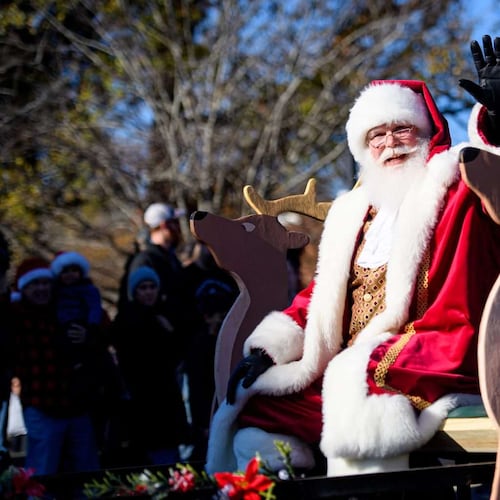This is peak migration time for ruby-throated hummingbirds heading south to winter grounds in Mexico and Central America. Hummers that nested during the spring and summer as far north as Canada are passing through Georgia now, joining “our” birds (which nested here) for the southward trek.
Many of the southbound birds are first-year hatchlings that hatched out this spring and summer and are making the arduous journey for the first time.
To help provide vital fuel for the hummingbirds, young and old, make sure your feeders are full of nectar water right now.
A large bulk of the hummingbirds’ fuel, though, is coming from Mother Nature’s nectar-rich fall wildflowers, such as cardinal flower and cypress vine. Perhaps the most important wildflower for the tiny birds this time of year is the spotted jewelweed, an annual that blooms in dense clusters in shady, moist areas across Georgia from July to October.
Growing up to 5 feet tall, the plant sports an abundance of inch-long, orange-yellow, trumpet-shape flowers with reddish splotches. Some say the jewelweed’s name comes from water droplets that stand on the plant’s leaves and reflect sunlight, making them appear jewel-like.
Jewelweed also is known as touch-me-not, because its mature seed pods in the fall literally pop, or explode, when touched.
Whatever name it goes by, the plant’s nectar-filled flowers provide convenient, essential fuel for hummingbirds during fall migration. In return, the nectar-sipping birds help pollinate the plant. Scientists believe that the spotted jewelweed and the ruby-throat co-evolved over millennia to take advantage of each other’s services.
Without jewelweed, biologists believe, there wouldn’t be enough energy-rich food for the hummingbirds, and many would not survive.
Jewelweed also can benefit humans. When its leaves and stems are crushed and rubbed on a poison ivy skin rash, it is the best antidote for relieving the itching.
In the sky: The moon will be full Monday — the "nut moon" as the Cherokee peoples called it — according to David Dundee, Tellus Science Museum astronomer. Most folks, though, know it as the "harvest moon" because its bright light helped farmers harvest crops long into the evening. Mercury is low in the west just after dark. Mars is in the west at dusk. Jupiter is low in the east just before sunrise. Saturn is low in the west at dusk and sets in the west before 9 p.m.
About the Author
The Latest
Featured

